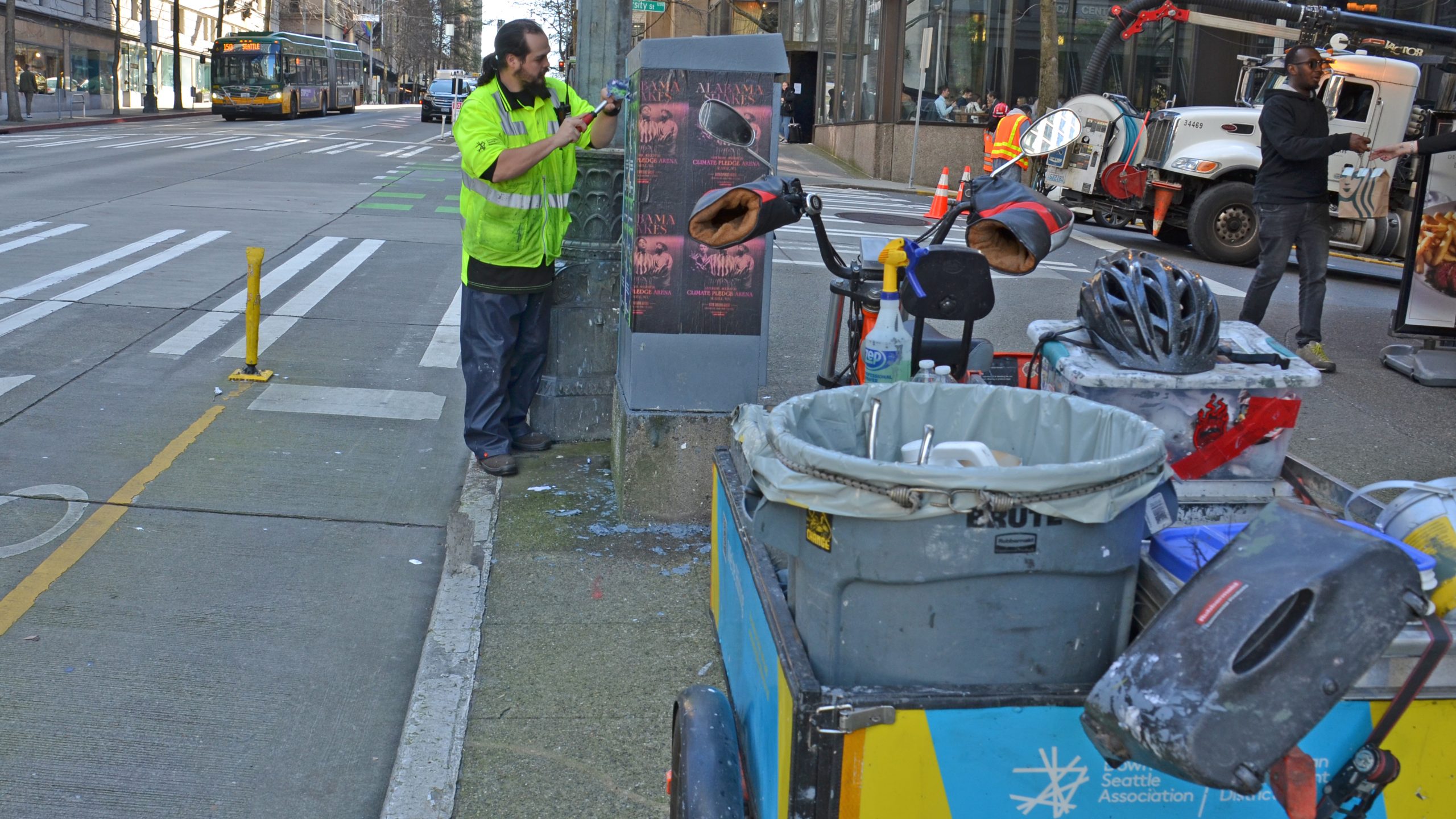News
KOMO 4: Seattle’s Downtown Ambassadors tackle trash, graffiti and homelessness in cleanup effort
Posted on

This story was originally published by KOMO 4 on June 17, 2025.
The Downtown Ambassadors program in Seattle has significantly expanded its efforts to clean up the city, now covering more than 300 square blocks with 165 ambassadors working daily to clean up the city streets.
The initiative, which addresses issues from graffiti and vandalism to homelessness, has seen the teams spend nearly 283,000 hours in the community over the past year. They have removed more than 1.2 million gallons of trash and nearly 49,000 graffiti tags and stickers, according to a report from the Downtown Seattle Association (DSA).
“You got to have some type of heart, some type of feeling for these people, like you just can’t come out here and do the job,” Master Lindsey, a downtown ambassador, said.
The downtown ambassadors are also tasked with checking in on the unhoused and connecting them with resources.
“Basically, we check on these people that’s out here, make sure they’re doing alright, you know sometimes the mental might not be right, sometimes they might need someone to talk to, so we take care of all of them,” Lindsey said.
Business owners in the area have noted the positive impact of the program, noting the ambassadors’ work cleaning up graffiti around the downtown area has saved them significant time and money cleaning it up themselves.
“In fact, last week when they were here, they cleaned, they pressure once to exterior this,” Nick Ferderer, who runs Base Camp Studio downtown, said. “It’s gotten a lot better, and I think that presence is definitely helpful.
“Certainly, when we’ve had any issues or anything here in the store or outside the store, we call them,” Dani Cone of Cone and Steiner in Pioneer Square added. “I mean, they’re a safe resource, I guess I’ll say, to call, and they’re around. Just their presence makes a positive impact.”
“From what we’ve seen here, just in our neighborhood, the idea of having more of that to a broader radius, I think it would be instrumental in helping shift things back and coming back,” Cone added.
The program provides various services, from directions to hand warmers and even Narcan if needed.
“I’m trying to take pride in what I do because I don’t want nobody to come to my city and be like, ‘Oh, you know, it’s not cool down here,'” Lindsey said. “Basically, we’ll be here for the public. We want the public to feel comfortable down here.”
Business owners have expressed interest in expanding the program to other neighborhoods like Capitol Hill. The Downtown Seattle Association stated they are open to discussions with other neighborhoods to explore potential options to expand service.
“We welcome the opportunity to speak with neighborhoods who have interest in investing in our services and expanding the areas of downtown that receive MID [Metropolitan Improvement District] services,” Jon Scholes, president & CEO of the Downtown Seattle Association, said.